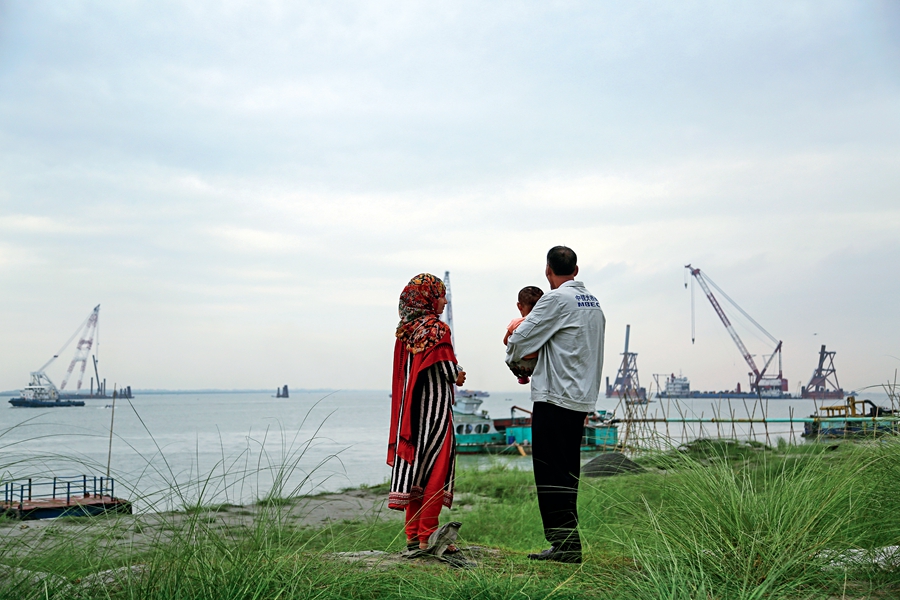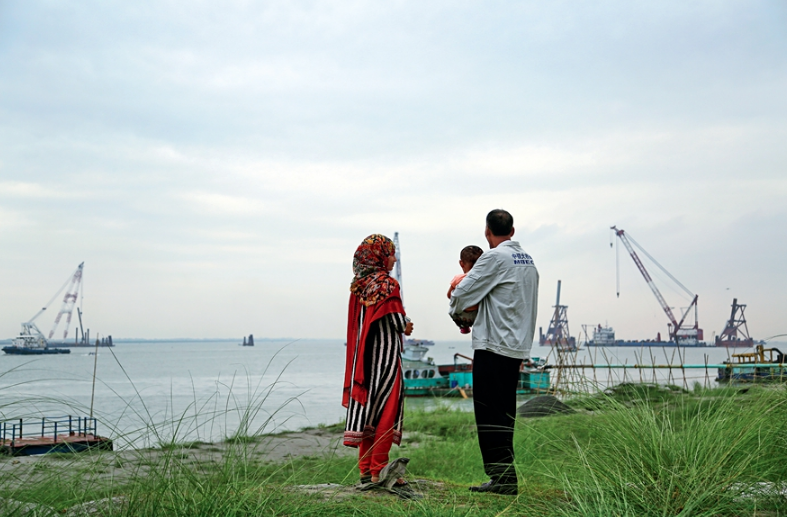From Water Barrier to A Bridge to Progress
China Today,May 28, 2018 Adjust font size:
Sincerity, the Key to People-to-people Bonds
However, the construction process is fraught with complications. Liu told China Today that according to China’s domestic practices, for all bridge projects, the construction design is drawn immediately after the primary design of the bridge is done, and then the construction company can directly start its construction. However, for the Padma Bridge project, the designing organization left the construction site soon after they finished the primary design. Therefore, the work to determine related parameters of the engineering project was left to the construction company under the supervision of on-site supervising engineers. It took the Chinese company nearly two years.
At a press conference held on March 8 on the sidelines of the annual session of the NPC, Chinese Foreign Minister Wang Yi said, “The Belt and Road Initiative is a transparent initiative launched by China. It follows the golden rules of extensive consultation, joint contribution, and shared benefits.” He then added that cooperation under the initiative aims to be based on equal footing, inclusive, and universally beneficial. Wang Yi went on to say, “The planning and implementation of the initiative’s projects are discussed by the participants in the open. No country is dominating the process. All parties have an equal say. There is no backroom deal. Everything is transparent. There is no winner taking all. Every project seeks win-win results.”
During their stay in Bangladesh Chinese workers and engineers have had closer exchanges with local people and government, their emotions towards the country have become increasingly deeper, thus strong people-to-people bonds between the two countries formed.
On the construction site of the Padma Bridge, much work has also been done by local workers. Many of them, following the Chinese company, have participated in the construction of multiple bridges. Now, as old friends of Chinese people, they have become adept in the bridge construction field.
According to Liu Ziming, over 400 Chinese technicians and over 2,000 Bangladeshi workers are hired for the Padma Bridge project. The 27-year-old MD Shohel Rana has been working with the MBEC for five years, having grown from a young graduate who has no experience in engineering construction to a veteran who is now able to independently carry out engineering tests. He admitted that Yang Pinxiang, his Chinese mentor, has taught him much. The Padma Bridge is the second project he participated in with Yang. He said that the experience with this project will enrich his resume, so that he will have better employment prospects for the future.

A local resident, also the chief steward of the Padma Bridge Project, with his daughter and grandson, admires the construction of the Bangladeshi dream bridge.
Abdul Malek is a Muslim and he prays at the prescribed times every day. He is experienced in engineering testing, and was recommended by his former employer to participate in the Padma Bridge project. In the very beginning, he was not sure if he would adapt to a Chinese enterprise well. But soon he found that the Chinese enterprise has advanced technologies and the Chinese employer is very considerate to make it convenient for him to pray. “I feel blessed to be able to participate in the construction of this dream bridge,” he said.
The Padma Bridge connects not only the countries of China and Bangladesh, but also the two peoples, who are now working together to build a better future.
The bridge is expected to benefit local people, promote regional cooperation and communication. Since the beginning of the Belt and Road Initiative, many projects with the same aim have been launched or completed, such as the Mombasa-Nairobi Standard Gauge Railway, Hungary-Serbia Railway, China-Laos Railway, China-Thailand Railway, Jakarta-Bandung High-speed Railway, second line for the China-Russia oil pipeline, China-Belarus Industrial Park, and the China-Thailand Rayong Industrial Zone. Data show that over 140 countries have participated in or responded positively to the Belt and Road Initiative, and 86 countries and international organizations have signed 101 cooperation agreements with China under the initiative. China-Europe express freight train service has made a total of 6,637 trips, with 3,673 trips made last year.
During China’s 2018 two sessions, the National Development and Reform Commission released the Report on the Implementation of the 2017 Plan for National Economic and Social Development and on the 2018 Draft Plan for National Economic and Social Development, which said that by making the Belt and Road Initiative a priority, China has seen stable and healthy development of a new system for an open economy. Efforts will be made to improve the quality of foreign investment in China and Chinese investment abroad, and further open China to the world.

